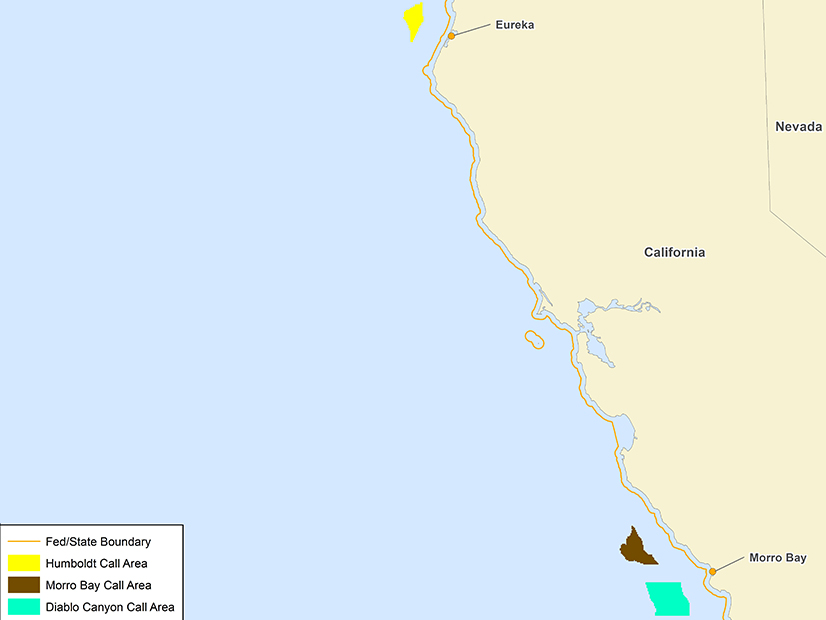The Biden administration Tuesday announced it plans to offer leases for California’s first offshore wind areas, a 399-square-mile block off Morro Bay that could support 3 GW, and the Humboldt Call Area off Northern California, which it said is big enough for an additional 1.6 GW.
Interior Secretary Deb Haaland, National Climate Adviser Gina McCarthy and California Gov. Gavin Newsom took part in the announcement of the two potential wind energy areas (WEAs).
The announcement followed years of consultation between Interior and the Defense Department to identify areas that would not interfere with the Pentagon’s training and testing operations.
“Tackling the climate crisis is a national security imperative, and the Defense Department is proud to have played a role in this important effort,” Under Secretary for Policy Colin Kahl said in a statement. “The Defense Department is committed to working across the U.S. government to find solutions that support renewable energy in a manner compatible with essential military operations.”
The Bureau of Ocean Energy Management issued a call for information and nominations for offshore wind on Oct. 19, 2018, for three areas, including Humboldt, Morro Bay and the Diablo Canyon Call Area. Plans for Diablo Canyon were not disclosed in Tuesday’s announcement. Fourteen developers responded to BOEM’s 2018 solicitation.
BOEM and California officials will hold an Intergovernmental Renewable Energy Task Force meeting on June 24 to discuss the potential WEAs. After the task force meeting, the WEAs can be finalized and undergo environmental analysis. BOEM expects to include both the northern and central areas in a single lease sale auction targeted for mid-2022.
The Biden administration has proposed deployment of 30 GW of offshore wind by 2030, but most of the attention has been focused on the East Coast, which has the advantage of relatively shallow waters on the continental shelf, allowing turbines to be installed in the seabed. The deeper waters of the West Coast will likely require use of floating turbines.
California must triple its renewable capacity to meet its goal of 100% clean energy by 2045. Senate Bill 100, which established the goal, envisions 10 GW of offshore wind and more than doubling onshore wind from 6 GW to 12.6 GW.
State Assemblymember David Chiu (D) has proposed legislation that would require the California Energy Commission to set offshore wind targets within three months (Assembly Bill 525).
“I am excited about the opportunity for offshore wind on the West Coast and the Pacific,” BOEM Director Amanda Lefton said during an appearance Tuesday at Reuters’ U.S. Offshore Wind 2021 conference. “There is clearly interest from our state partners, and I think there is a tremendous opportunity to move forward.”
Experts say the distance between the wind areas and California’s ports will be among its biggest challenges in making offshore wind a reality. (See Port System Big Challenge for Calif. Offshore Wind.)
“While interest from the global industry will be unprecedented, West Coast development requires American ingenuity and innovation in next generation technologies that will create opportunities for engineering firms and skilled labor,” said Liz Burdock, CEO of the Business Network for Offshore Wind.



